With summer finally coming to an end, a few friends of ours threw a backyard barbecue get-together last weekend to savor the last of the sunny months. I love to make a savory potato bun for burgers (thanks to a well-loved recipe from my time at San Francisco Cooking School), so I volunteered to bring homemade burger buns to the event.
Typically, I make my potato buns using an unbleached white bread flour – Central Milling Organic Artisan Baker’s Craft Plus has been a favorite – and with the additions of potatoes, green onions, milk, and olive oil, they turn out very flavorful and soft with a satisfying chew.
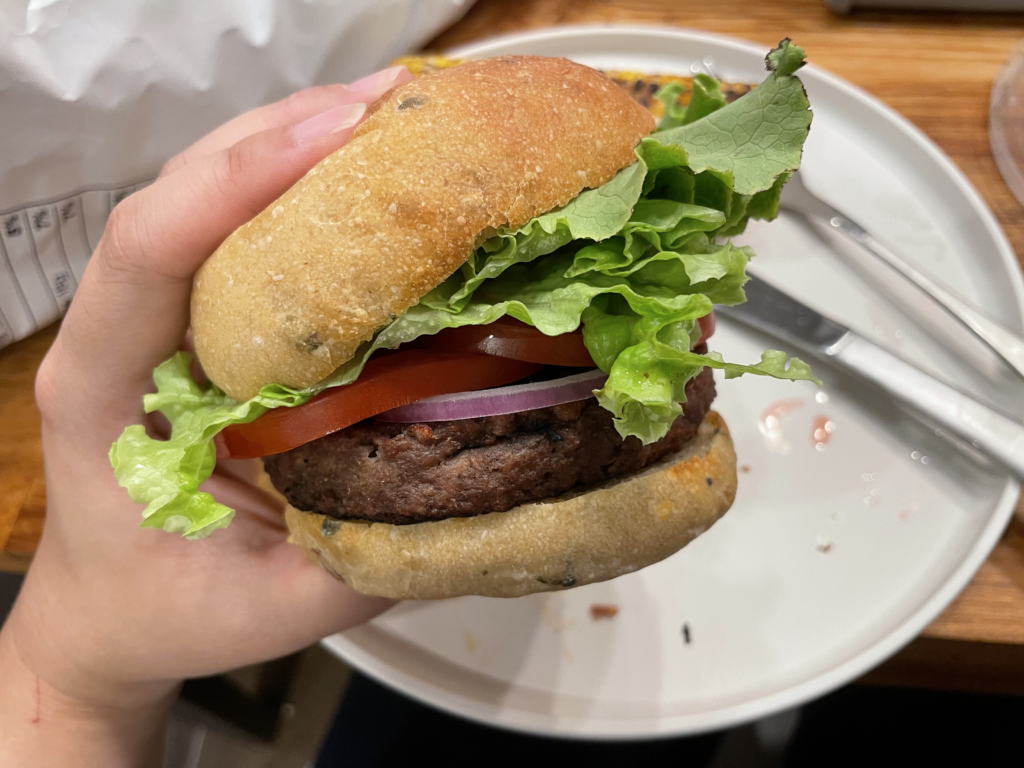
This time, however, some of the other guests were vegan, which presented me with the opportunity to do a bit of experimentation on my tried-and-true recipe. Aside from subbing out the milk in the recipe, I also happened to have a new bag of Cairnspring Mills Trailblazer Bread Flour, a stone-milled T85 flour (Type 85 – a bit more on that below), which I was eager to try out. From there, a vegan T85 burger bun was born!
Finding a substitute for milk
Since the only non-vegan ingredient in the original potato bun recipe is milk, converting it to a vegan recipe wasn’t too complicated. In this recipe, the milk doesn’t play a big technical role in terms of say, fat content or acidity, so it should be easy to substitute another liquid with good results.
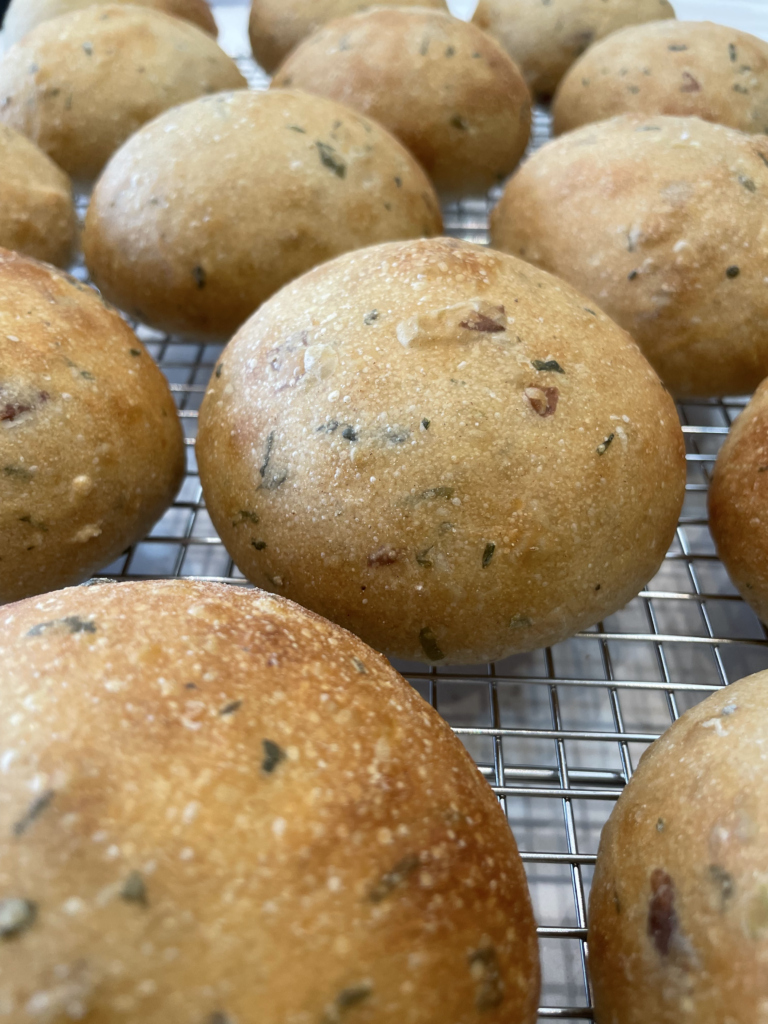
Originally, I figured the best substitute for cow’s milk might be a vegan milk alternative such as unsweetened almond milk or oat milk. However, I felt reluctant to go out and buy some because those aren’t products I typically consume.
How about beer?
I was considering just subbing in plain water when I remembered the wonderful allergen-free baking classes I was fortunate enough to take in previous years with Jeffrey Larsen. Jeff has an impressive wealth of knowledge and experience on baking allergen-free, including gluten-free, dairy-free, and egg-free. His book, Gluten-Free Baking at Home, and my notes from his classes are my go-to sources for inspiration on how to best serve people with various dietary restrictions.
In Gluten-Free Baking at Home, Jeff writes, “It is my feeling that milk makes a small offering in most baked goods. Milk contributes to browning but beyond that, it really is just liquid. My favorite substitute is bubbly water. It boosts the rise of baked goods. […] I also like to use gluten-free beer or gluten-free hard cider – they are really great in bread and dinner rolls.”
I loved the idea of trying beer in the buns, and we happened to have some in the fridge already – score! Beer is vegan, right?
Turns out, beer is not always vegan! I learned that some beers contain non-vegan flavorings like honey or lactose, and others use animal products to clear the cloudy yeast out of the beer. I opted to substitute the milk 1:1 with Rainier beer, which has a light, refreshing taste, and is indeed vegan.
What’s different about T85 flour?
T85 (Type 85) flour, or high extraction flour, is somewhere between a whole wheat flour and white flour. It has more of the wheat bran and germ included than a white flour does, so it’ll have a darker color and a “wheatier” flavor. The “85” refers to the ash content (in this case, ~0.85%) of the flour, which reflects how much mineral content the flour has.
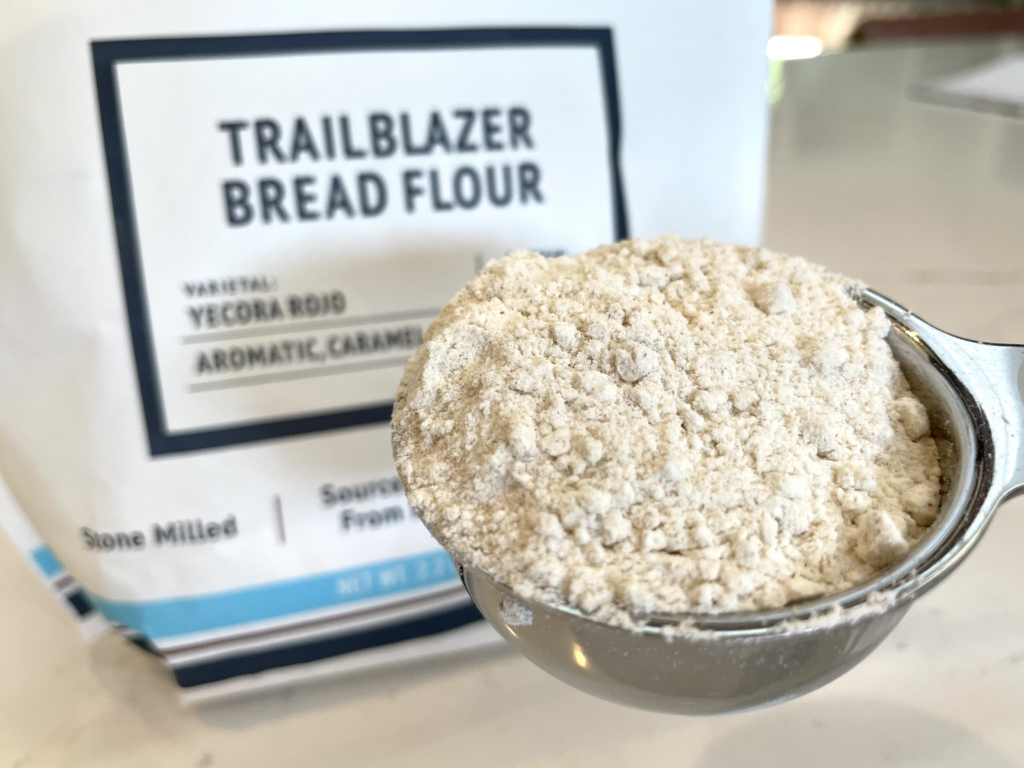
Minerals are found mostly in the germ and bran of the wheat berry, so a higher ash content indicates that there is more germ and bran present in the flour. (For reference, my usual bread flour, Artisan Baker’s Craft, has an ash content of 0.60%.) There’s a whole process to determining ash content involving burning a set quantity of flour and measuring the residue. It’s pretty cool!
With there being so much nuance to wheat, milling, and flour (so much that there are whole books written on it!), I could not call myself anywhere near an expert in this field. Beyond just the extraction rate, there are hard vs. soft wheats, the seasons in which they’re grown, the place they come from, milling technique, and more that affects the taste and texture of your end product!
Adjusting the recipe for a different flour
Thankfully, though it’s quite interesting and worth learning about, you don’t need to know all of that to make a decent adjustment to a recipe for a different type of flour. In the case of my potato bun, the main factors I considered were:
| Central Milling Organic Artisan Baker’s Craft Plus | Cairnspring Mills T85 Trailblazer Bread Flour | |
| Water Absorption | Use standard amount of water in recipe | Will absorb more water – add 5% (5% guideline helpfully provided by Cairnspring Mills) |
| Taste | Delicious, creamy, approachable bread flour for any application | This particular flour is new to me, but expect a more complex and “wheaty” taste |
| Color | Cream | Latte / light caramel |
| Protein Content | 11.5% | 13 – 14.5% |
| Texture | Soft chew | Expect a bit more chew |
| Malted? | Yes | No |
The malted flour includes added malted barley flour. According to Central Milling, “The addition of malt increases enzymatic activity during fermentation. This yields bread with greater volume without diminishing the integrity of the open crumb.” I didn’t do anything this time to adjust for this, but I like to keep that in mind as I observe the results of using different flours.
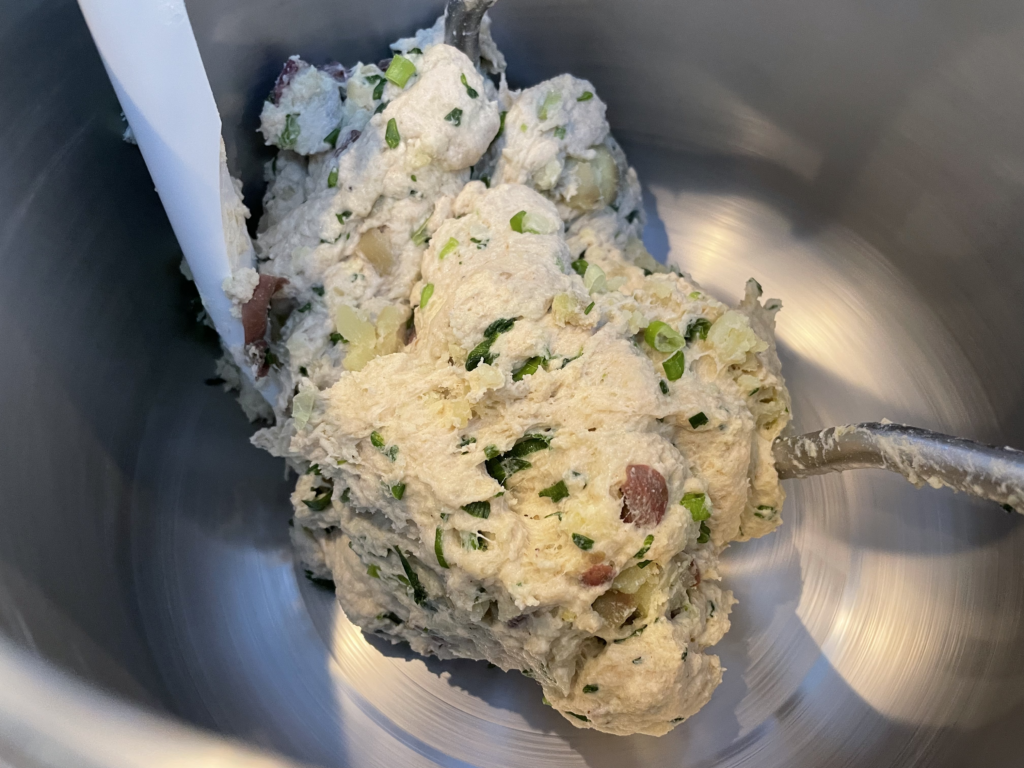
The guideline to add 5% more water for the Trailblazer flour worked well! With no other changes aside from subbing beer in for the milk, everything came together easily into a smooth, elastic dough. The rest of the process, bulk fermentation through baking, went about the same as with my usual recipe.
The result
Overall, the buns were a success! They had a great bouncy, chewy texture that the barbecue guests loved, without being rubbery. As expected, they also had a slightly browner color and a wheatier taste. I’m sure the flour contributed significantly to the change in taste, but I’m curious whether the beer made a noticeable difference, too.
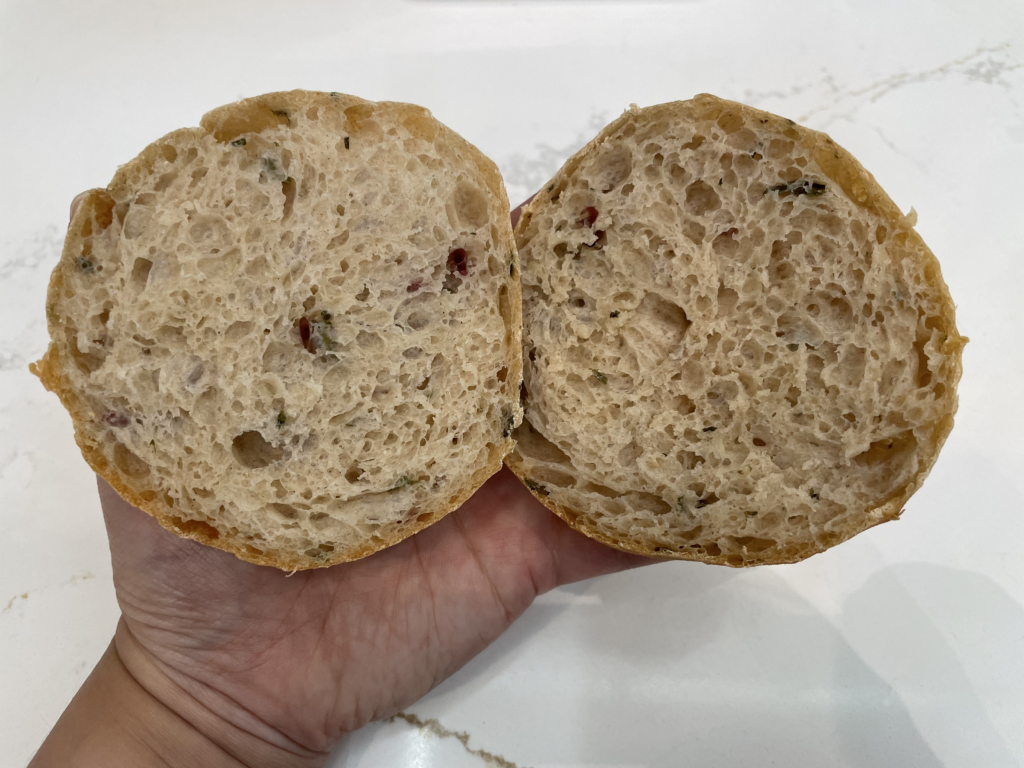
I also noticed that the buns seemed not to puff up quite as much during the final proof. As a result, the final buns were just a tad smaller than usual (but still big enough for a burger patty!). Besides the factors of the flour’s extraction rate and protein content, I wonder how much of a role the malted barley played in the difference in rise.
I’ll look forward to experimenting more with this flour! 🥖✨

